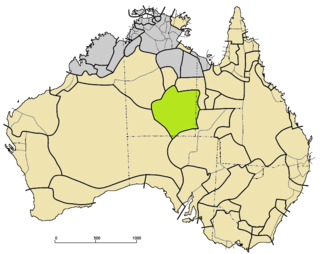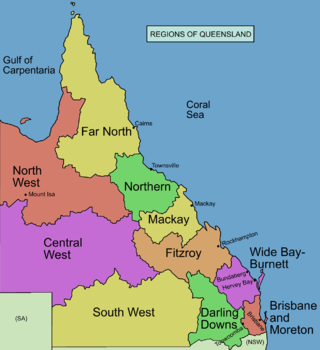The Kalkadoon are descendants of an Indigenous Australian tribe living in the Mount Isa region of Queensland. Their ancestral tribe has been called "the elite of the Aboriginal warriors of Queensland". In 1884 they were massacred at "Battle Mountain" by settlers and police.
Pitta Pitta is an extinct Australian Aboriginal language. It was spoken around Boulia, Queensland.
Kalkatungu is an extinct Australian Aboriginal language formerly spoken around the area of Mount Isa and Cloncurry, Queensland.
Warluwarra is an extinct Australian Aboriginal language of Queensland. Waluwarra has a traditional language region in the local government area of Shire of Boulia, including Walgra Station and Wolga, from Roxborough Downs north to Carandotta Station and Urandangi on the Georgina River, on Moonah Creek to Rochedale, south-east of Pituri Creek.

Arrernte or Aranda, or sometimes referred to as Upper Arrernte, is a dialect cluster in the Arandic language group spoken in parts of the Northern Territory, Australia, by the Arrernte people. Other spelling variations are Arunta or Arrarnta, and all of the dialects have multiple other names.
The Andegerebinha language, also known as Andegerebenha, Andigibinha, Antekerrepenhe and Antekerrepinhe, is an Australian Aboriginal language of the Northern Territory, specifically of the Upper Arrernte language group. It was spoken around the Hay River and Pituri Creek area. It was spoken by only ten individuals in 1981, five in 2005, and in the 2016 census there were no fluent speakers of the language, so is now classified as dormant.
Wagaya (Wakaya) is an extinct Australian Aboriginal language of Queensland. Yindjilandji (Indjilandji) may have been a separate language. The linguist Gavan Breen recorded two dialects of the language, an Eastern and a Western variety, incorporating their description in his 1974 grammar.
Wanggamala, also spelt Wanggamanha, Wangkamahdla, Wangkamadla, Wangkamanha, Wangkamana, Wonkamala, Wongkamala, Wonkamudla, and other variants, is an extinct Australian Aboriginal language of the Pama–Nyungan family, previously spoken in the Northern Territory around Hay River and to the south of the Andegerebinha-speaking area.

Western Queensland encompasses the three western regions in the Australian state of Queensland:
Glenormiston Station, commonly known as Glenormiston, is a pastoral lease that operates as a cattle station in Queensland, Australia.
Gavan Breen, also known as J. G. Breen, was an Australian linguist, specialising in the description of Australian Aboriginal languages. He studied and recorded 49 such languages.
The Tulua people were an Aboriginal Australian people of Queensland, in the southern to central region from the coast to the ranges. The Dappil and Tulua people possibly spoke the same language.
The Goeng or Gureng were an Aboriginal Australian people of the state of Queensland. They lived in the area of the area of present-day Gladstone.
The Wanggamala people, also spelt Wangkamahdla, Wangkamadla, Wangkamanha, Wangkamana, Wonkamala, Wongkamala, Wonkamudla, and other variants, are an Aboriginal Australian people of the Northern Territory and Queensland.
The Koa (Guwa) are Australian Aboriginal people and Native Title Holders of land in the Upper Diamantina River catchment area in the state of Queensland that includes the towns of Winton, Kynuna, Corfield and Middleton.
The Wongkadjera were an Indigenous people of the state of Queensland.
The Pitapita or Pitta Pitta are an Aboriginal Australian people of the state of Queensland.
The Julaolinja were an indigenous Australian people of the state of Queensland.
The Kulumali were an indigenous Australian people of the state of Queensland.
The Yalarnnga, also known as the Jalanga, are an Indigenous Australian people of the state of Queensland.